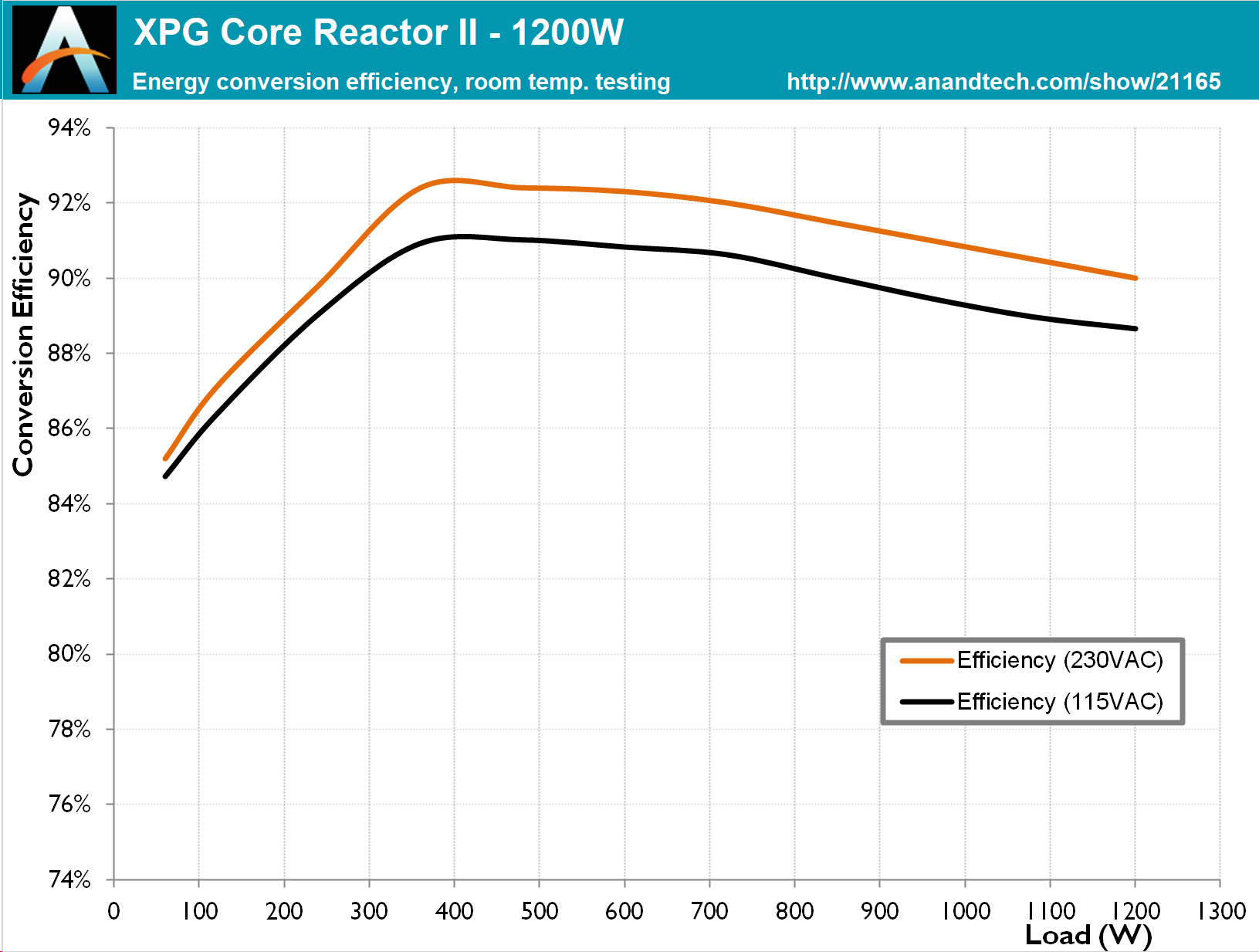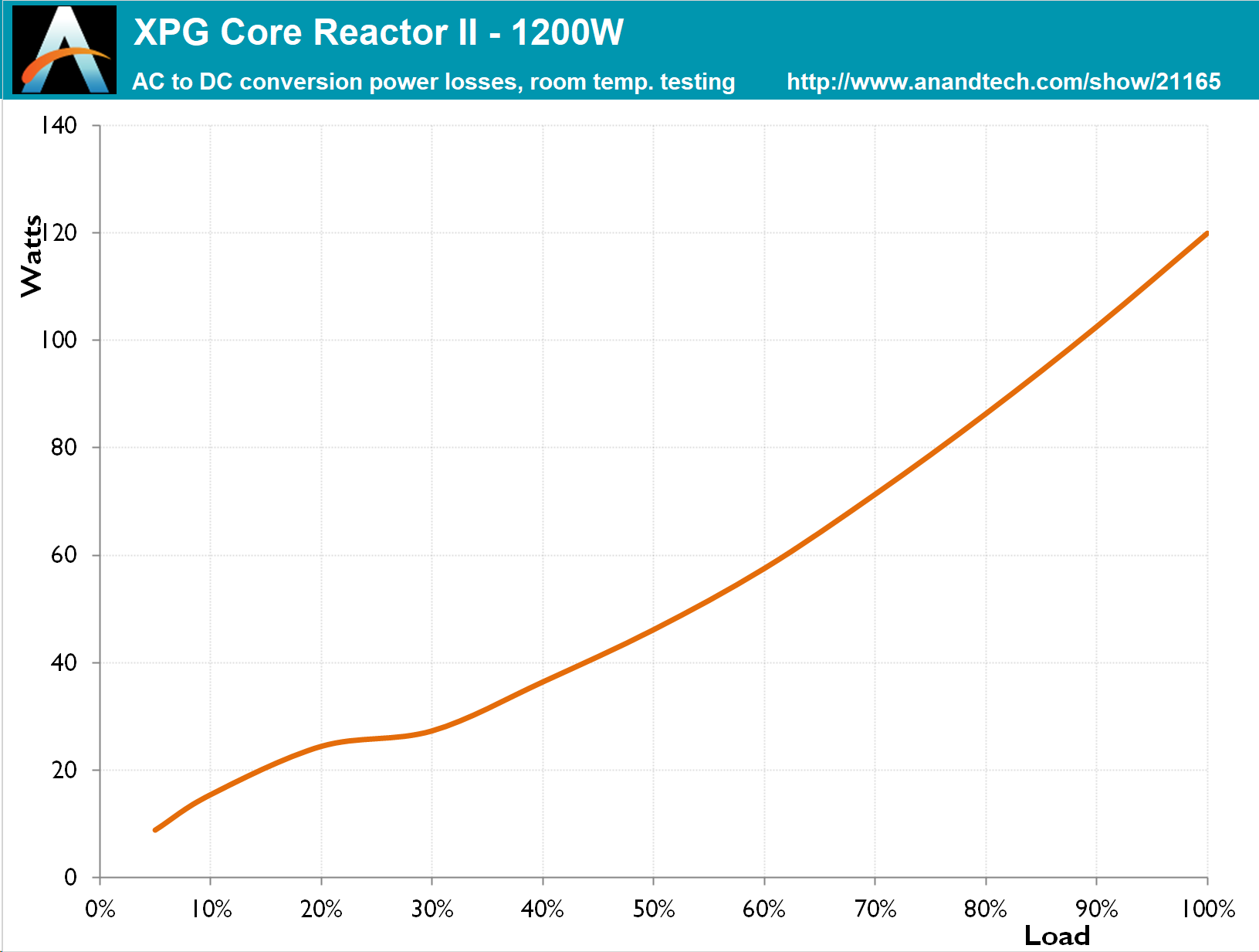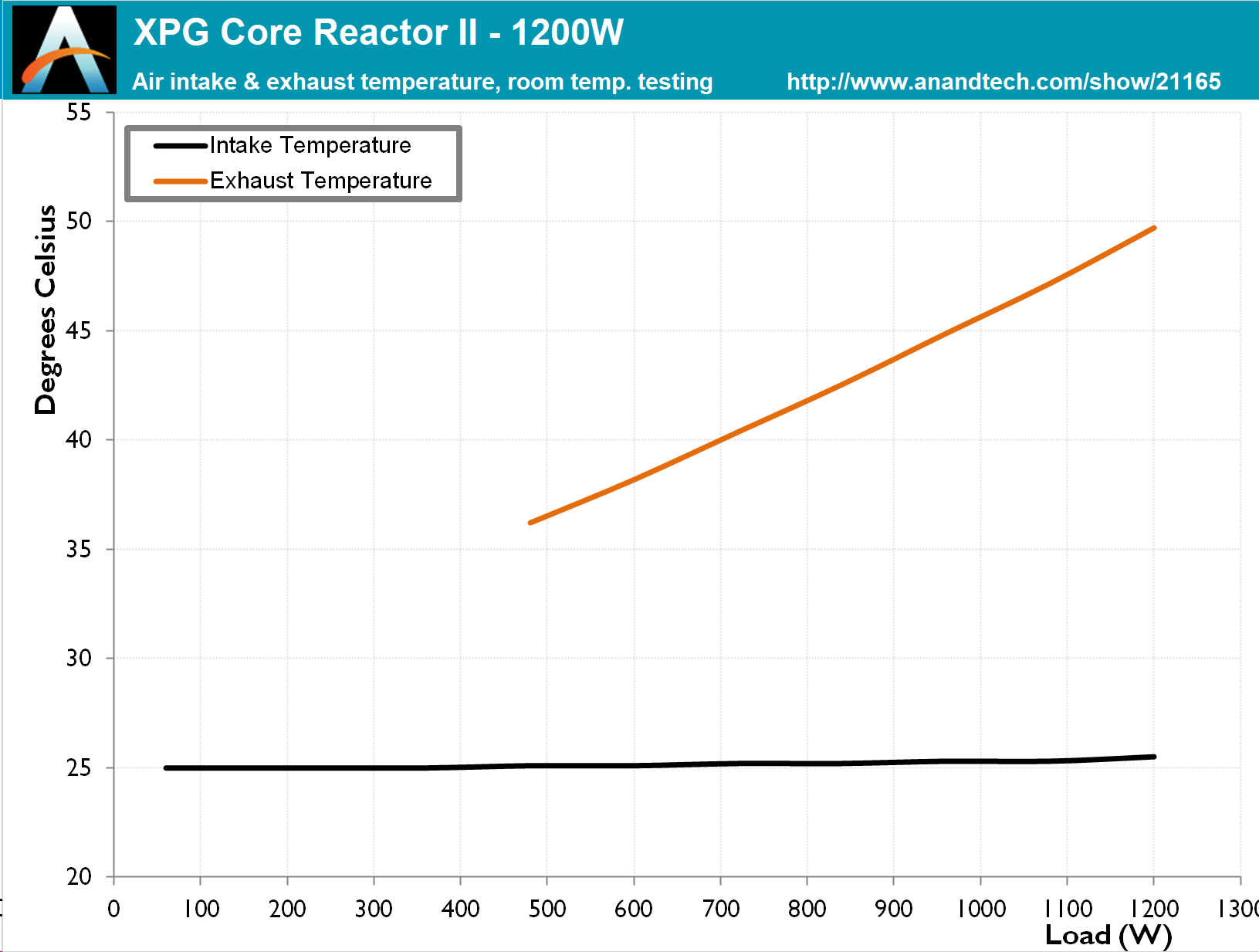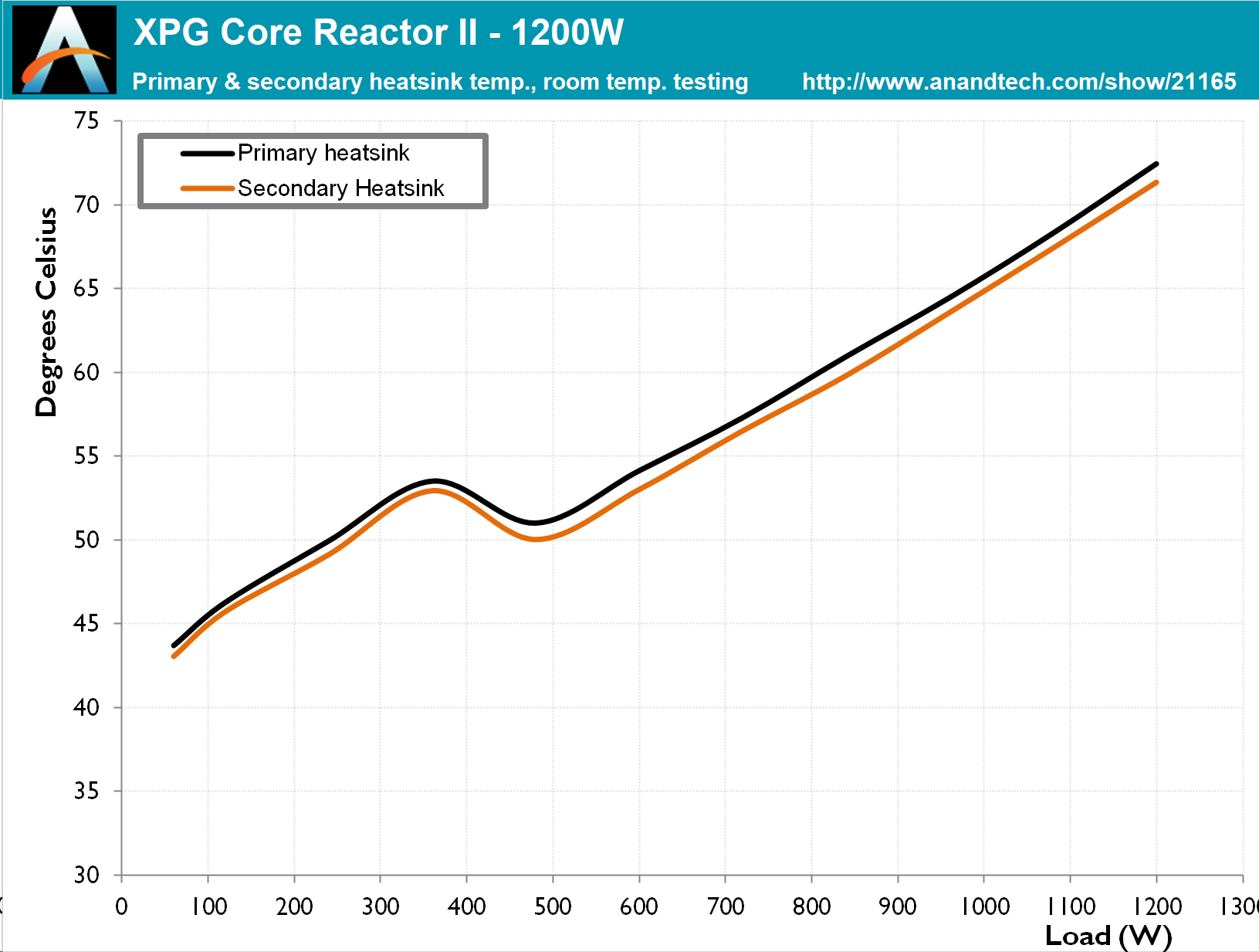The XPG Core Reactor II 1200W PSU Review: XPG Goes for the Gold
by E. Fylladitakis on December 19, 2023 8:00 AM EST- Posted in
- Cases/Cooling/PSUs
- PSUs
- 1200W
- 80Plus Gold
- XPG
- ATX v3.0
- 12VHPWR
Cold Test Results (~25°C Ambient Temperature)
For the testing of PSUs, we are using high precision electronic loads with a maximum power draw of 2700 Watts, a Rigol DS5042M 40 MHz oscilloscope, an Extech 380803 power analyzer, two high precision UNI-T UT-325 digital thermometers, an Extech HD600 SPL meter, a self-designed hotbox and various other bits and parts. For a thorough explanation of our testing methodology and more details on our equipment, please refer to our How We Test PSUs - 2014 Pipeline post.
The XPG Core Reactor II 1200W power supply unit demonstrates commendable efficiency, aligning with its 80Plus Gold certification. Although the figures are not too high, it maintains good efficiency across a broad range of load conditions, resulting to a high average. In tests conducted with a 230 VAC input, the Core Reactor II achieves an average nominal load efficiency of 91.3%, a respectable figure within its category. This efficiency slightly decreases to 89.9% when tested under a 115 VAC input. While this reduction in efficiency is noticeable, it doesn't significantly detract from the unit's overall performance, which remains solidly high for a Gold-rated PSU.
The fan of the Core Reactor II 1200W PSU begins to operate when the PSU reaches 40% of its capacity. Despite its significant power output, the internal temperatures of the unit remain within reasonable limits, which is commendable given that the fan never reached its maximum speed during our room temperature testing.
During cold testing, the XPG Core Reactor II 1200W PSU's fan initiates operation at 40% capacity. The fan speed is very slow up to a 60% load and increases progressively beyond this point. It will reach clearly audible figures once heavily loaded, even if only for a few seconds. However, even under heavy load conditions, the fan does not reach its maximum speed of 2300 RPM.















9 Comments
View All Comments
PeachNCream - Tuesday, December 19, 2023 - link
They know their audience if they're including girl-in-spandex stickers.Threska - Tuesday, December 19, 2023 - link
Seems the majority have already licked the most important "bells and whistles" and that's it working like a competent PSU within it's ranges. Bells and whistles would be RGB lighting or USB monitoring.blppt - Wednesday, December 20, 2023 - link
The RTX5090 probably will require an actual reactor the way things are going.tipoo - Wednesday, December 20, 2023 - link
Is there an in depth Meteor Lake review coming?Ryan Smith - Wednesday, December 20, 2023 - link
Yes. Though don't expect anything until after the holiday period.sonny73n - Wednesday, December 20, 2023 - link
PSU cables are still as stiff as ever and no new design innovation.Threska - Wednesday, December 20, 2023 - link
With modular PSU cables should be easier to replace with something silicone. Only thing fixed is the ATX cable.timecop1818 - Friday, December 22, 2023 - link
fixed how? every recent modular PSU I've seen the 24atx part is also modular, removable.meacupla - Saturday, December 23, 2023 - link
Softer cables tend to use less copper and less copper is not a desirable feature for ATX PSU cables.You really don't want to go less than 18AWG. Some higher quality PSUs use 17 or 16AWG for EPS/PCIe.
If you want to go fully custom, be my guest and use 20 or 22 AWG.